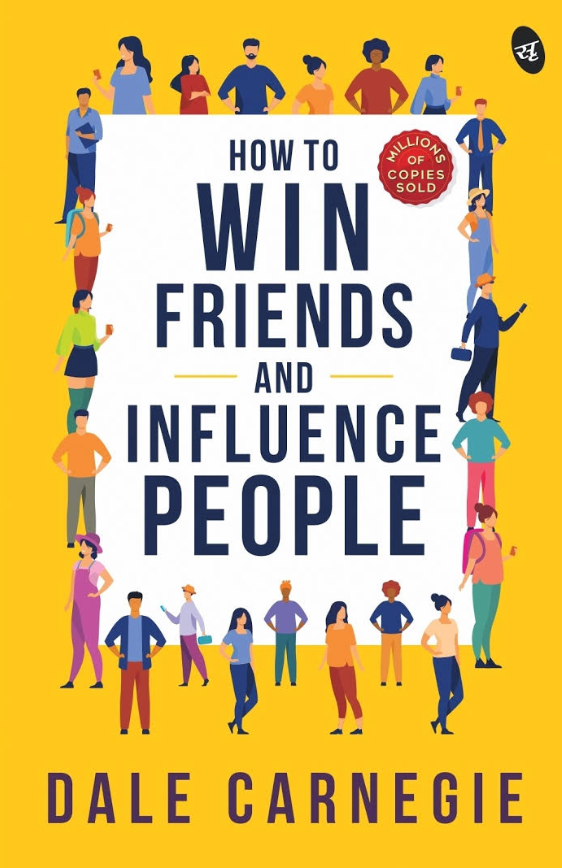“How to Win Friends and Influence People” is not merely a titular incantation suggesting the ability to navigate social intricacies with finesse; it is an exploration of the human psyche, a roadmap to understanding the subtle nuances that define our interactions. Dale Carnegie, in his seminal work, peels back the layers of human behavior, addressing a common observation that we are inherently social beings, driven by a desire for acceptance and recognition. This book serves as a treasure trove of insights that resonate deeply, even decades after its original publication.
The title itself provokes curiosity. Why do people feel an undeniable urge to connect, to influence, and to be liked? Perhaps it is an ancient vestige of our evolutionary past, where survival hinged on group cohesion. Carnegie’s work not only addresses this common observation but delves into the deeper, often unspoken reasons that govern our social dynamics. Could it be that the fear of isolation and the craving for companionship compel us to refine our interpersonal skills?
One of the most impactful aspects of Carnegie’s writing is his emphasis on the transformative power of genuine interest in others. This notion, while seemingly straightforward, is remarkably profound. The art of listening, the grace of patience, and the authenticity of one’s intentions often lie at the heart of successful interactions. Carnegie posits that making others feel valued is the cornerstone of effective communication. When we actively engage and express a sincere interest in the thoughts and feelings of others, we inadvertently foster a conducive atmosphere for rapport.
Throughout the book, Carnegie elucidates a series of principles that serve as the scaffolding upon which relationships are built. Among these, one stands out: the importance of remembering names. It is an intriguing observation that a person’s name is intrinsically tied to their identity. Calling someone by their name holds a certain magic—an affirmation of their existence and worth. This simple yet powerful technique can open doors and forge connections that may otherwise remain closed.
Yet, to merely memorizing names falls short of the broader principle at hand: the importance of personal acknowledgment. We thrive when recognized, and in an era where digital interactions often overshadow genuine human connection, Carnegie’s insights feel particularly relevant. His understanding of these dynamics allows readers to navigate the complex tapestry of social interaction with a greater degree of empathy and awareness.
Carnegie does not shy away from discussing the inevitable conflicts that arise in human relations. He acknowledges that disagreement is a commonplace aspect of life; however, he advocates for a methodology grounded in respect and understanding. The notion that one can disagree without being disagreeable is a lesson that remains ever significant. By adopting a perspective that prioritizes compassion over contention, one can cultivate an atmosphere conducive to constructive dialogue.
An astute analysis reveals that Carnegie’s principles are rooted in what can be deemed an ancient wisdom—treating others as we wish to be treated. This idea, echoed across cultures and generations, transcends temporal boundaries, reminding us of our shared humanity. Navigating the labyrinth of relationships requires not only skill but a moral compass guided by empathy, kindness, and a genuine desire for connection.
In an age dominated by social media and virtual interactions, Carnegie’s principles are even more critical. The screen often acts as a barrier, distorting the genuine nuances of communication. Yet, the thirst for deeper connections persists. Readers today can glean from Carnegie’s wisdom that authentic influence is not the culmination of manipulative tactics but is instead rooted in sincerity. In a world where superficial connections abound, the value of fostering genuine relationships is incomprehensible.
The author skillfully intertwines anecdotes and real-life examples, breathing life into his principles. These stories are not mere embellishments; they are the scaffold that illustrates the practical application of his ideas. Herein lies the profound beauty of this work: it invites readers to reflect on their own experiences and interactions, prompting a self-evaluation of interpersonal dynamics that fosters growth and understanding.
As one traverses through the chapters, it becomes evident that “How to Win Friends and Influence People” transcends the confines of a mere guidebook on networking or persuasion. It is a call to action, urging individuals to embrace vulnerability and authenticity in their interactions. Carnegie’s reflections prompt readers to ponder: what does it truly mean to connect? Is influence merely about convincing others, or is it about nurturing a symbiotic relationship where both parties thrive?
In conclusion, Carnegie’s work persists as an enduring classic, imbued with wisdom that transcends the ages. It resonates with a fundamental truth: the essence of social interaction is not about wielding power but about cultivating relationships. By embracing the principles laid out by Carnegie, one embarks on a transformative journey—towards becoming not just a friend, but an influencer in the truest sense of the word: one who inspires trust, empathy, and connection. Therefore, as readers close the book, they are left not only with actionable insights but with a renewed appreciation for the intricate dance of human relationships. The lessons within these pages are timeless, waiting to be unearthed and embraced anew.
